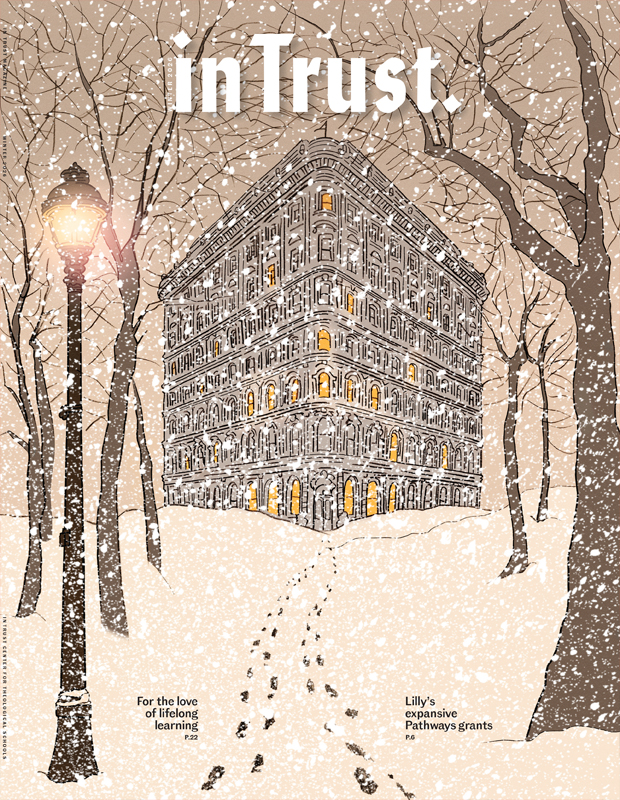It is a recognized truism within the world of business that innovation, a constant challenge to established ways of doing things, is the key to economic success. However, academics have been slower to accept change as a positive value. Why is it that higher education, including graduate theological education, has remained relatively static and resistant to change despite changing conditions in both the church and society?
This question is worthy of the attention of board members and faculty of today’s theological schools, and as they ponder, there are models of innovation to which institutional leaders can look for inspiration. A number of schools have sought new ways of serving the leadership needs of the churches and have, as a result, established patterns of change that should be more widely known.
Taking Theology to the People
The elite paradigm of residential theological education in North America was challenged in the 1960s by burgeoning mission work in Latin America and Asia and the need to educate church leaders in a setting where churches could not afford traditional models of theological education. At this same time, evangelical churches and parachurch leaders in parts of the U.S. began to see the wisdom of “in ministry” education, keeping people where they are rather than sending them hundreds of miles away to be educated and then to serve. Fuller Theological Seminary (Pasadena, California) was one of the first ATS seminaries to respond to this felt need in a systematic way. Today, Fuller has a half dozen extension sites, three of which offer the full Master of Divinity program. The trail that Fuller blazed has been followed by dozens of other schools, and along the way, thousands of students have been provided the opportunity to obtain a seminary degree close to home.
Theological Education for All God’s People
The curriculum of most seminaries assumes the clerical paradigm, preparing clergy to preach, administer the sacraments, and to lead churches and church-related institutions. However, during the latter half of the 20th century, more and more denominations recognized that ministry is a much broader concept than what clergy do, and that, in fact, ministry belongs to all the people of God. Initially, laity enrolled in seminary without being formally invited, and faculty and administrators were not entirely certain what to do with them. The institution that pioneered what Samuel Calian, president of Pittsburgh (Pennsylvania) Seminary, refers to as the “people of God” paradigm was Regent College (Vancouver, British Columbia, Canada), which began in 1969 with a summer school featuring biblical and theological studies mixed with science, environmental studies, literature, and philosophy, and stressing ministry “in the world” (lay) as much as “in the church” (ordained).
Regent has maintained this bottom-up approach, although it also now offers the Master of Divinity degree. Each year, more than 1,000 individuals from twenty or so countries — clergy and laity, young and old, academics and professional leaders — enroll in Regent’s spring and summer school programs. Not surprisingly, Regent administrators and trustees rejoice that this traditionally down time in the academic calendar generates more than half the income of a traditional semester.
Beginning at Home
In the early 1970s, leaders at New York Theological Seminary asked who the school should be serving, and the answer that came back was pastors and pastors-in-training among immigrant communities — especially Hispanic and Korean, along with other ethnic minorities. To embark on its new mission, NYTS sold its campus, did away with the concept of tenured faculty, relocated in more affordable space, adopted newer models for adult education, and offered both graduate and theological education concurrently in Spanish, Korean, and English. Today, the seminary’s only residential degree program is in Sing Sing prison!
Lutheran Theological Seminary of Philadelphia also surveyed its neighborhood and discovered that many local churches were led by bi-vocational African-American pastors with little formal theological education. Recognizing that it was unrealistic for these men and women to stop what they were doing and become traditional students, LTSP established the Urban Theological Institute to serve these leaders by offering full degree programs in the evenings and on Saturdays.
LTSP students are more likely to belong to the African Methodist Episcopal (AME) Church, the National Baptist Convention, or the Church of God (Anderson, Indiana) than to the Evangelical Lutheran Church in America (ELCA). The success of this program has led to an urban track in the traditional seminary curriculum, the only full-blown training program for metropolitan ministry at the M.Div. level in a Lutheran seminary.
Too Few Priests
In the face of a shortage of new candidates for the priesthood, many Catholic colleges and universities have developed strong lay theological programs that are equipping a new breed of highly competent congregational and church-agency leaders.
One such program can be found at Seattle University’s School of Theology and Ministry, a Jesuit institution of long standing. Although the school had the faculty resources to offer graduate seminary education, there was not a need for another Catholic seminary to educate priests. But if the school were to focus on laity, SU might meet a regional need and so the STM was developed.
A few years later, a group of Protestant church leaders in the Seattle area asked if the curriculum could be expanded to include students from their churches. In response, SU established the Institute for Catholic Theological Studies and the Institute for Ecumenical Theological Studies.
Focus on the Arts
Jacques Maritain referred to the arts as “the John the Baptist of the heart, preparing its affections for Christ,” yet seminaries have rarely found a place for the arts on campus, much less in the curriculum. Wesley Theological Seminary, a United Methodist institution in Washington, D.C., has been an exception to this rule. Wesley’s Henry Luce III Center for the Arts and Religion guarantees that the arts are everywhere. Whether in a studio, the classroom, the library, the Dadian Gallery, or the Oxnam Chapel, the arts are media for theological expression. There is a growing interest in the arts and theological education in a number of other schools, but nowhere does this find a more all-pervasive expression than at Wesley.
These examples illustrate how a few theological schools have responded to changing realities. I wonder what the ATS would look like if innovation were enshrined as a core value in every member institution?




























